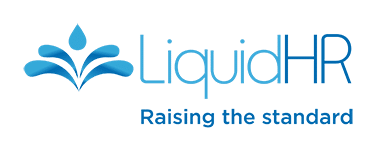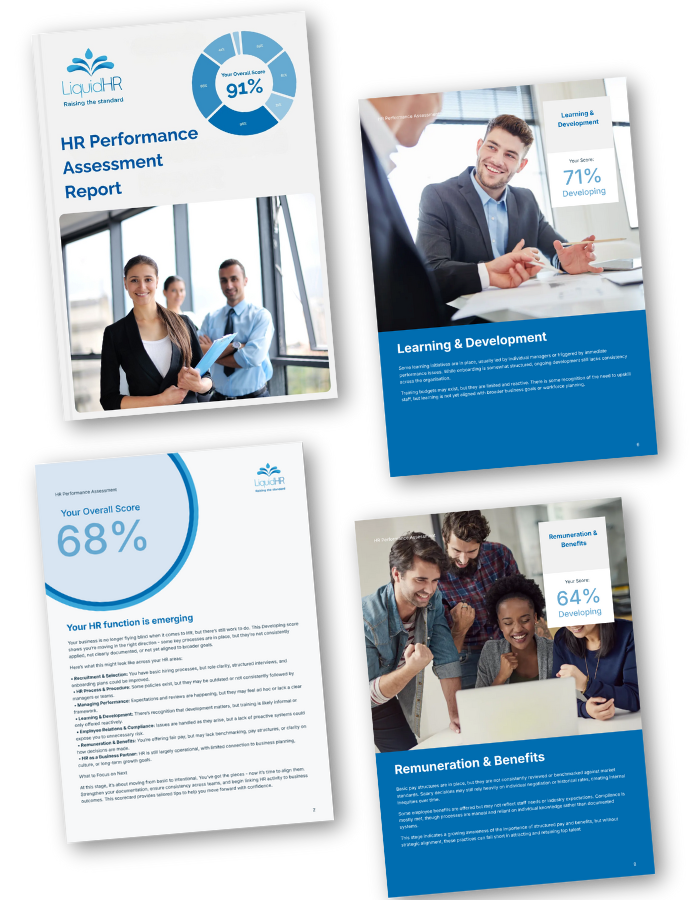The Rise of Flexible Leave Policies: What Australian Employees Want

Introduction
The way Australians work is changing and so are expectations around leave entitlements. While annual leave, sick leave, and long service leave remain standard under the National Employment Standards (NES), more employees are asking for flexible leave policies that reflect modern life. From wellbeing days to cultural leave, employers who adapt stand out as progressive and employee-focused.
What is a Flexible Leave Policy?
- A flexible leave policy goes beyond the statutory minimum entitlements set out by the Fair Work Act. It allows employees greater choice in how they use their time off, often blending traditional categories of leave with innovative options such as:
Wellbeing or “mental health” days - Purchase leave schemes (buying extra leave)
- Cultural or religious leave
- Volunteer or community service leave
- Family and caring leave beyond NES minimum.
In short: flexible leave means tailoring time-off benefits to support individual employee needs, not just legal requirements.
Why Flexible Leave Matters to Australian Employees
According to recent HR and workplace surveys, flexibility is consistently one of the top three factors employees consider when choosing an employer in Australia.
Key reasons include:
- Work-life balance: Employees want more control over their personal time.
- Mental health support: Extra leave days reduce burnout and stress.
- Inclusion and diversity: Policies that recognise cultural and family differences improve belonging.
- Retention and attraction: Jobseekers actively look for employers offering progressive leave entitlements.
In fact, employers offering flexible leave options often report lower turnover and higher engagement scores.
Examples of Flexible Leave Options in Australia
Forward-thinking Australian businesses are already experimenting with:
- Wellbeing days – 1–5 extra days per year for rest, mental health, or personal needs.
- Purchased leave – employees “buy” additional annual leave through salary deductions.
- Cultural and religious leave – additional leave for significant cultural/religious events not covered by public holidays.
- Family and carers leave expansion – beyond the NES 10 days, to support working carers.
- Unlimited leave policies – still rare in Australia, but gaining attention in start-ups and tech sectors.
Benefits for Employers
While some businesses worry about the cost, flexible leave policies can deliver strong ROI through:
- Improved retention – lower hiring and training costs.
- Stronger employer brand – competitive advantage in talent attraction.
- Higher productivity – employees return refreshed and more engaged.
- Reduced absenteeism – staff are less likely to “pull a sickie” when wellbeing leave is available.
Compliance Considerations
Employers introducing flexible leave policies must:
- Ensure compliance with the Fair Work Act 2009 (Cth) and NES.
- Update employment contracts and staff handbooks.
- Apply policies fairly and consistently to avoid discrimination claims.
- Communicate clearly so employees understand their entitlements.
What Australian Employees Want in 2025 and Beyond
Surveys suggest that the future of leave in Australia is trending towards:
- Hybrid and remote-friendly leave policies
- Personalised leave plans to match different life stages (e.g., parental leave, elder care leave)
- Wellbeing leave recognised as a standard benefit
- Flexible accrual systems that allow swapping between types of leave
Put simply, employees want choice, inclusivity, and recognition of modern family and lifestyle needs.
Key Takeaway
Flexible leave is no longer a “perk” it’s quickly becoming an expectation. For Australian businesses, adapting policies to include wellbeing, cultural, and extra caring leave is a powerful way to stay competitive, improve retention, and support employee wellbeing.
For practical guidance, Fair Work Australia’s Flexible Working Arrangements Best Practice Guide offers useful tips for employers considering more adaptive leave policies.
AI in HR: Risks, Opportunities, and Compliance Issues

Introduction
Artificial intelligence (AI) is transforming workplaces across Australia and HR is at the centre of this change. From recruitment software and chatbots to predictive analytics, AI in HR is reshaping how businesses manage people.
But with opportunity comes risk. HR leaders must balance the benefits of AI with compliance, privacy, and ethical obligations under Australian law.
Opportunities: How AI is Enhancing HR
AI can streamline and improve HR functions in several key areas:
- Recruitment and talent acquisition – automated CV screening, candidate matching, and chatbots for faster response times.
- Employee engagement – AI tools that measure sentiment, track feedback, and personalise employee experiences.
- Learning and development – adaptive training programs tailored to individual performance.
- Workforce planning – predictive analytics to anticipate turnover and skills shortages.
- Administrative efficiency – automating payroll, leave requests, and compliance tracking.
Done well, AI helps HR teams become more strategic and data-driven.
According to the AHRI and QUT report The State of AI in Australian Human Resources, AI is already being adopted across HR functions in Australia – from recruitment and engagement to analytics and learning – though many professionals remain cautious about risks and ethical use.
Risks of Using AI in HR
Despite its promise, AI in HR comes with real risks:
- Bias and discrimination – algorithms may replicate or amplify bias in recruitment or promotion decisions.
- Lack of transparency – employees may not understand how AI-driven decisions are made.
- Over-reliance on automation – replacing human judgment in sensitive HR areas can harm trust.
- Data security risks – AI systems rely on large volumes of employee data, creating privacy vulnerabilities.
- Job displacement – employees may fear AI will replace rather than support their roles.
These risks make it critical for HR professionals to combine AI use with ethical oversight.
Compliance Issues in Australia
Australian HR teams must ensure AI use complies with:
- Fair Work Act 2009 (Cth) – ensuring AI systems do not result in unfair treatment or adverse action.
- Privacy Act 1988 (Cth) & Australian Privacy Principles (APPs) – strict rules on collecting, storing, and using employee data.
- Anti-discrimination laws – ensuring AI tools do not indirectly discriminate based on gender, age, race, or disability.
- Workplace health and safety laws (WHS) – requiring that AI systems support, not undermine, safe working environments.
- Upcoming Privacy Law reforms – which are expected to tighten AI accountability and employee data protections.
Best Practices for Using AI in HR
To make the most of AI while staying compliant, HR leaders should:
- Audit algorithms regularly to identify bias or discrimination.
- Maintain transparency – explain to employees how AI is used in HR processes.
- Ensure human oversight for sensitive decisions such as hiring, promotion, and termination.
- Protect employee data with strong cybersecurity and privacy safeguards.
- Stay up to date with Fair Work, Privacy, and anti-discrimination laws.
- Involve employees – communicate openly to build trust in AI adoption.
The Future of AI in HR in Australia
AI will play a growing role in HR, but employees and regulators are watching closely. Future trends include:
- Stricter governance and reporting requirements for AI use.
- Greater use of predictive analytics for workforce planning.
- Expansion of employee experience platforms powered by AI.
- A balance between automation and human empathy, ensuring HR remains people-first.
Key Takeaway
AI in HR offers powerful opportunities but also legal, ethical, and compliance challenges. For Australian businesses, success means adopting AI tools responsibly, transparently, and in line with the law.
FAQs
How is AI used in HR?
AI is used in HR for recruitment, employee engagement, learning and development, workforce planning, and automating admin tasks.
What are the risks of AI in HR?
Risks include bias, discrimination, lack of transparency, data privacy issues, and over-reliance on automation.
What compliance issues affect AI in HR in Australia?
Employers must comply with the Fair Work Act, Privacy Act, anti-discrimination laws, and WHS regulations when using AI tools.
The Future of Performance Management: Moving Beyond Annual Reviews

Introduction: The End of the Annual Review?
For decades, the annual performance review has been the cornerstone of performance management. Yet in 2025, more organisations in Australia and globally are questioning whether once-a-year feedback is enough.
The answer is clear: it isn’t. Today’s employees want continuous feedback, coaching, and growth opportunities, not a single meeting that decides their fate.
Why Annual Reviews Are Outdated
Annual reviews often fail because they are:
- Too infrequent – feedback delivered once a year is too late to drive improvement.
- Stressful – employees often dread reviews, seeing them as judgment rather than development.
- Backward-looking – focusing on past mistakes instead of future growth.
- Misaligned – they don’t reflect the agility of modern workplaces where goals change quickly.
In fact, research shows more than 60% of employees feel annual reviews don’t improve performance.
What’s Replacing Annual Reviews?
Progressive organisations are shifting towards:
1. Continuous Feedback
Regular check-ins between managers and employees weekly, monthly, or project-based provide real-time feedback that’s actionable.
2. Goal Setting & OKRs
Instead of yearly objectives, many businesses use quarterly goals or OKRs (Objectives and Key Results) to stay aligned with changing priorities.
3. Coaching Conversations
Managers are moving from “judges” to “coaches”. Performance management now emphasises strengths, career aspirations, and skill development.
4. 360-Degree Feedback
Input from peers, direct reports, and managers gives a fuller picture of performance and reduces bias.
5. Data-Driven Insights
HR tech platforms provide analytics on productivity, engagement, and development needs, helping managers make informed decisions.
Benefits of Moving Beyond Annual Reviews
For businesses that embrace modern performance management:
- Employees feel more supported and engaged.
- Retention improves, workers are less likely to leave when their growth is prioritised.
- Managers catch issues early instead of waiting 12 months.
- Alignment with strategy improves, as goals shift with the business.
How Australian Businesses Can Adapt
Practical steps for HR leaders:
- Replace annual reviews with regular check-ins, even 15 minutes monthly makes a difference.
- Train managers as coaches – equip them with listening and feedback skills.
- Adopt simple digital tools for continuous goal tracking.
- Pilot a hybrid system – combine quarterly reviews with informal check-ins before scaling.
- Communicate the “why” – explain to employees how the new system benefits their growth.
Key Takeaway
Annual reviews are becoming a relic. The future of performance management is continuous, data-informed, and focused on growth. Australian businesses that adapt now will see higher engagement, stronger performance, and reduced turnover.
According to AHRI’s 2024 High‑Performance Work Systems in Australia report, performance management was among the top adopted HR practices – along with flexible work arrangements and information sharing – highlighting that Australian organisations are actively embedding modern performance frameworks.
FAQs
Why are annual reviews no longer effective?
Because they are infrequent, stressful, and backward-looking, offering little value for ongoing development.
What’s replacing annual reviews?
Continuous feedback, regular check-ins, coaching conversations, goal setting with OKRs, and 360-degree feedback.
How can businesses transition smoothly?
Start with quarterly reviews, introduce manager coaching, and use HR tech to track goals and feedback in real time.
How to Handle Workplace Bullying and Harassment

Introduction
Bullying and harassment in the workplace are not just cultural issues they are legal risks. In Australia, employers have a duty to provide a safe workplace under both the Fair Work Act 2009 (Cth) and Work Health and Safety (WHS) laws.
Failure to act can result in legal claims, reputational damage, and reduced employee wellbeing. Here’s how to identify, prevent, and handle bullying and harassment effectively.
What is Workplace Bullying?
According to the Fair Work Commission, bullying occurs when:
- A person or group repeatedly behaves unreasonably towards a worker, and
- That behaviour creates a risk to health and safety.
Examples include:
- Aggressive or intimidating behaviour
- Unreasonable criticism or micromanagement
- Exclusion from work activities
- Spreading rumours or malicious gossip
One-off incidents or reasonable management actions (like performance reviews) are not bullying.
What is Workplace Harassment?
Workplace harassment includes unwelcome behaviour that demeans, offends, or humiliates an employee.
It may involve:
- Sexual harassment (unwanted advances, comments, or contact)
- Harassment based on race, gender, age, disability, religion, or other protected attributes under anti-discrimination law
- Offensive jokes, slurs, or stereotyping
Harassment is unlawful under the Sex Discrimination Act 1984 (Cth) and other anti-discrimination laws.
The Speaking from Experience report from the Australian Human Rights Commission shares first-hand accounts of workplace sexual harassment, offering valuable insights into the real impact on victims and the systemic gaps that still need to be addressed.
How Employers Should Respond: Step-by-Step
1. Set Clear Policies
- Create and communicate a bullying and harassment policy.
- Include definitions, reporting channels, and disciplinary procedures.
2. Provide Training
- Educate all staff on appropriate behaviour.
- Train managers to recognise and respond to bullying and harassment.
3. Encourage Reporting
- Offer multiple safe reporting channels (HR, anonymous hotlines, line managers).
- Assure employees they will be protected from victimisation.
4. Act Quickly
- Acknowledge complaints promptly.
- Begin investigations within a reasonable timeframe.
5. Investigate Fairly
- Use a confidential, impartial process.
- Gather evidence, interview witnesses, and document findings.
6. Take Action
- Outcomes may include mediation, disciplinary action, or dismissal.
- Communicate findings and next steps transparently.
7. Support Employees
- Provide access to Employee Assistance Programs (EAPs).
- Check in regularly with affected employees to monitor wellbeing.
Compliance Obligations in Australia
Employers must ensure:
- Compliance with the Fair Work Act anti-bullying provisions.
- A safe workplace under WHS laws.
- Protection against discrimination under federal and state laws.
- Accurate recordkeeping of complaints, investigations, and outcomes.
Failure to comply can lead to orders from the Fair Work Commission, fines, and compensation claims.
Building a Respectful Workplace Culture
Prevention is more effective than response. Employers should:
- Foster inclusive leadership.
- Promote values of respect and fairness.
- Regularly review workplace culture through surveys and feedback.
Key Takeaway
Handling workplace bullying and harassment requires clear policies, swift action, and a culture of respect. For Australian businesses, it’s not just best practice, it’s a legal requirement.
FAQs
What should I do if I witness bullying at work?
Report it through your employer’s bullying and harassment procedure, or directly to HR. Witnesses play a key role in stopping harmful behaviour.
Can employees apply directly to the Fair Work Commission?
Yes. Workers who experience ongoing bullying can apply for a stop-bullying order.
Is workplace harassment the same as bullying?
No. Bullying refers to repeated unreasonable behaviour, while harassment often involves unlawful conduct linked to discrimination or sexual harassment.
Need help staying compliant?
Stay compliant with our updated Modern Award Guides – covering SCHADS, Retail, Hospitality, Fast Food, Restaurant, and Clerks awards. Each guide includes key July 2025 updates.












